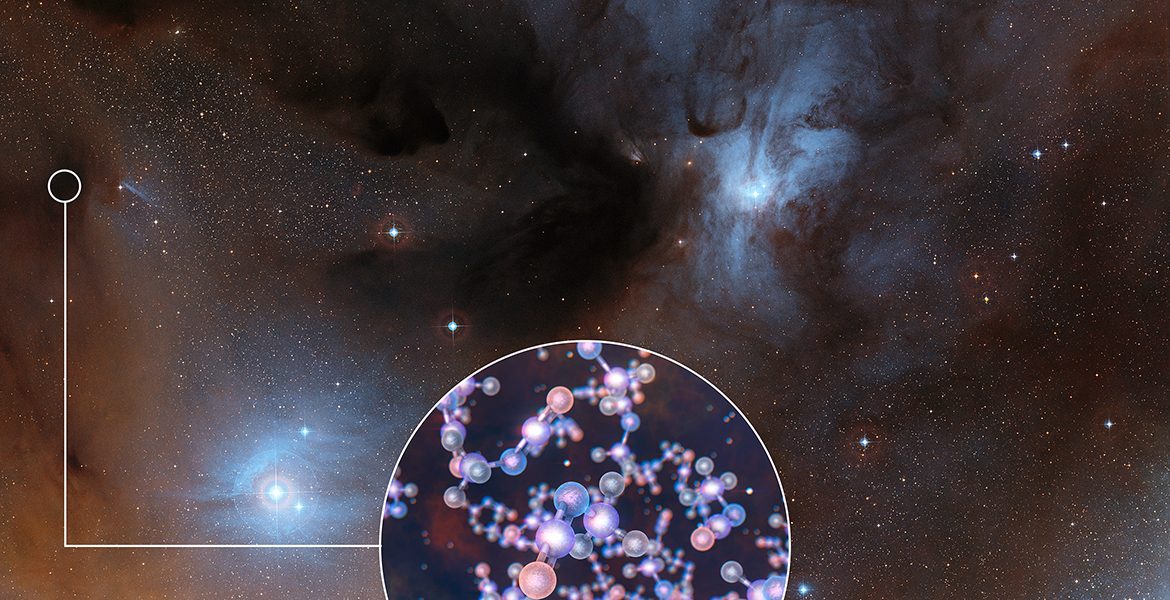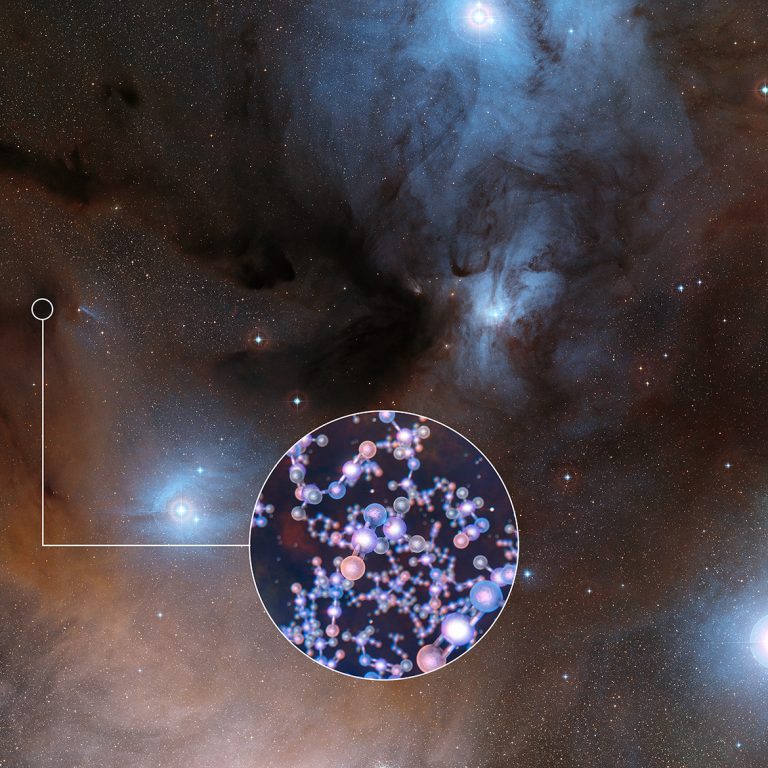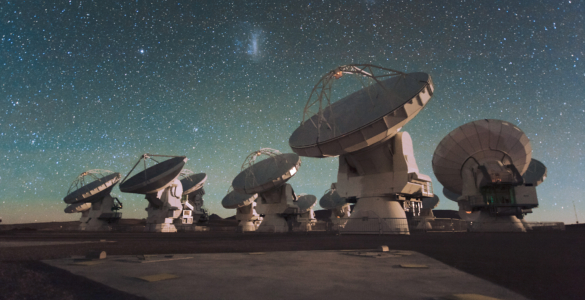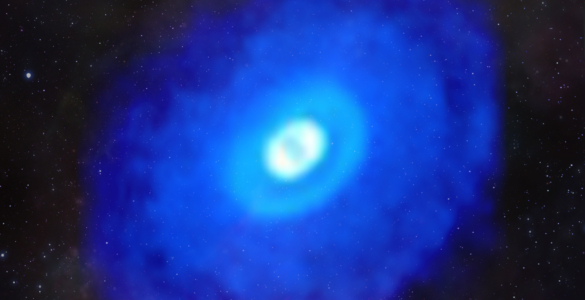Our solar system is teeming with simple carbon-based molecules, the basic building blocks of life. If the conditions are right, these simple molecules can go on to form more complex, biologically interesting molecules, such as amino acids and proteins. Though it’s a long way from a few simple molecules to even the most basic proteins, detecting chemistry similar to Earth’s around distant stars suggests that the pathway to life may be possible on other worlds.
Recently, two teams of astronomers using the Atacama Large Millimeter/submillimeter Array (ALMA) have found traces of the organic molecule methyl isocyanate around a multiple star system about 400 light-years from Earth known as IRAS 16293-2422. The newly emerging stars in the system bear a striking resemblance to what scientists believe would be versions our own sun.
To life on Earth, methyl isocyanate is highly toxic. However, in the interstellar environment it can combine with other molecules to form peptides and amino acids, and may therefore be essential for life.
Previously, methyl isocyanate has been found in comets in our own solar system, which means that it was around when Earth and the other planets coalesced out of a massive cloud of dust and gas some 4.6 billion years ago. Finding it around solar-type protostars helps to open a window to the past for astronomers, allowing them to observe conditions similar to those that led to the formation of our solar system.
Astronomers Rafael Martín-Doménech at the Centro de Astrobiología in Madrid, Spain, and Víctor M. Rivilla, at the INAF-Osservatorio Astrofisico di Arcetri in Florence, Italy, co-led one of the research teams. The other was led by Niels Ligterink at the Leiden Observatory in the Netherlands and Audrey Coutens at University College London, United Kingdom.
ALMA’s capabilities allowed both teams to independently observe the molecule — which has unique chemical fingerprints in the radio spectrum — deep inside the warm, dense cocoon of dust and gas that surrounds these stars, which are in their earliest stages of evolution.
“This molecule is especially noteworthy because it is found toward a protostar that is similar in many respects to the environment in which the sun and planets were formed,” said Rob Garrod, a chemist at the University of Virginia in Charlottesville and co-author on one of the papers.
“We are particularly excited about the result because these protostars are very similar to the Sun at the beginning of its lifetime, with the sort of conditions that are well suited for Earth-sized planets to form. By finding prebiotic molecules in this study, we may now have another piece of the puzzle in understanding how life came about on our planet,” noted Rafael Martín-Doménech and Víctor M. Rivilla, lead authors on one of the papers.
The researchers then used computer chemical modeling and laboratory experiments to refine their understanding of the molecule’s origin.
“Besides detecting molecules we also want to understand how they are formed. Our laboratory experiments show that methyl isocyanate can indeed be produced on icy particles under very cold conditions that are similar to those in interstellar space This implies that this molecule — and thus the basis for peptide bonds — is indeed likely to be present near most new young solar-type stars,” said Niels Ligterink at the Leiden Observatory in the Netherlands.
The system was previously studied by ALMA in 2012 and found to contain molecules of the simple sugar glycolaldehyde, another ingredient for life.
The National Radio Astronomy Observatory is a facility of the National Science Foundation, operated under cooperative agreement by Associated Universities, Inc.
# # #
Atacama Large Millimeter/submillimeter Array (ALMA), an international astronomy facility, is a partnership of ESO, the U.S. National Science Foundation (NSF) and the National Institutes of Natural Sciences (NINS) of Japan in cooperation with the Republic of Chile. ALMA is funded by ESO on behalf of its Member States, by NSF in cooperation with the National Research Council of Canada (NRC) and the National Science Council of Taiwan (NSC) and by NINS in cooperation with the Academia Sinica (AS) in Taiwan and the Korea Astronomy and Space Science Institute (KASI).
ALMA construction and operations are led by ESO on behalf of its Member States; by the National Radio Astronomy Observatory (NRAO), managed by Associated Universities, Inc. (AUI), on behalf of North America; and by the National Astronomical Observatory of Japan (NAOJ) on behalf of East Asia. The Joint ALMA Observatory (JAO) provides the unified leadership and management of the construction, commissioning and operation of ALMA.
This research was presented in two papers: “First Detection of Methyl Isocyanate (CH3NCO) in a solar-type Protostar” by R. Martín-Doménech et al. and “The ALMA-PILS survey: Detection of CH3NCO toward the low-mass protostar IRAS 16293-2422 and laboratory constraints on its formation”, by N. F. W. Ligterink et al.. Both papers will appear in the same issue of the Monthly Notices of the Royal Astronomical Society.
Contact: Charles Blue
434-296-0314; cblue@nrao.edu



















